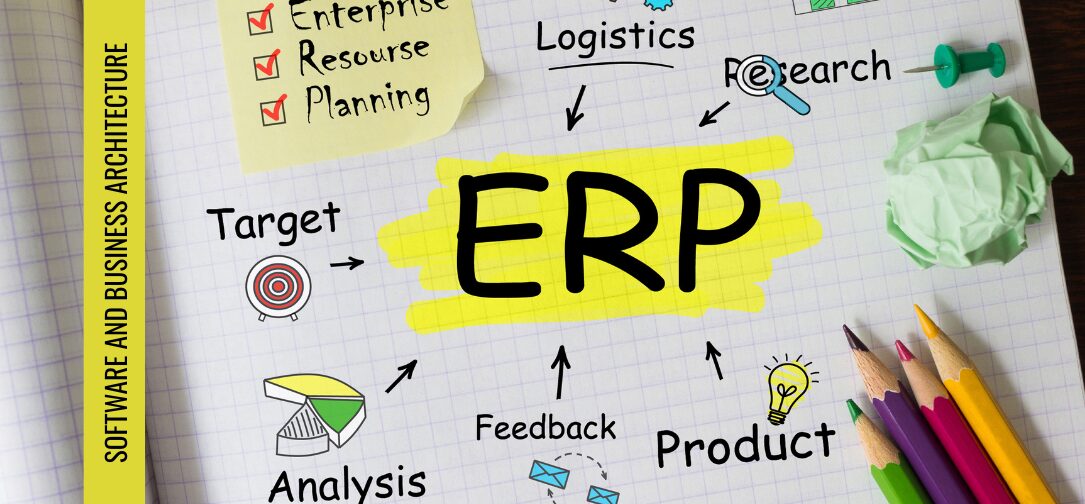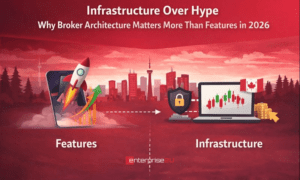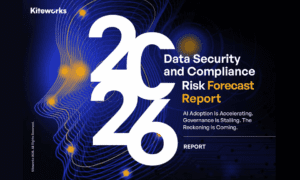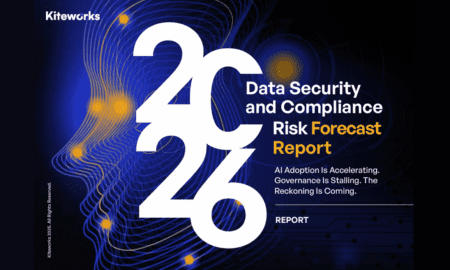ERP is not just a program, but a way of thinking about business systematically.
Serial entrepreneur Oleksandr Vasyliev, who has been implementing logistics and management systems for 20 years, explains why ERP is not a “program with features” but an architecture of processes, roles, and decisions. And why the success of digitalization depends not on the platform you choose, but on the company’s willingness to rebuild itself from the inside.
In recent years, ERP systems have become an almost mandatory attribute of any growing business. This is especially true for logistics, trade, and manufacturing. Executives study rankings, compare modules, choose “the most universal platform” — and often believe that purchasing ERP will automatically solve their problems: speed up order processing, eliminate Excel, and make the business “digital.”
But the reality is much more complicated.
One of the most common mistakes is to perceive ERP as just a “program” that can be installed and used “starting Monday.” This approach leads to a paradox: companies implement powerful systems but continue operating with old, inefficient schemes. As a result — disappointment, internal team sabotage, and the impression that ERP “doesn’t work.”
In reality, successful ERP implementation is not about programming. It’s about architecture. The architecture of business, processes, responsibility, and management logic.
The goal of this article is to show that ERP is not a tool for automation, but the foundation of enterprise management architecture. And the success of its implementation depends not on a set of features, but on the company’s readiness to rebuild itself in a new way.
What Is ERP: Classic Definition vs. Practical Essence
Let’s start with the basics. ERP — Enterprise Resource Planning — is a system for planning enterprise resources. In the classic sense, it is a set of software modules that combine the key functions of a company: finance, logistics, production, procurement, sales, and HR. ERP allows you to manage the entire enterprise from a single center and in real time.
But that’s the formal definition.
In practice, ERP is not just a digital “control panel.” It’s how a company thinks, how it makes decisions, how it measures effectiveness, and how it builds interaction between departments.
ERP is not accounting. It’s not “software for the warehouse.” It’s the company’s operating model expressed in code. And if there is no clear understanding inside the company of what it does, why, and how — no ERP will save it.
A Simple Analogy: ERP as the Nervous System of the Business
- CRM is like the voice and ears (client contact).
- WMS is like the hands (task execution).
- ERP is like the nervous system: it connects the organs, controls movements, tracks signals, makes decisions, and coordinates the entire organism.
If the “body of the business” is chaotic and inconsistent, ERP will simply capture that chaos. And conversely — if processes are structured, ERP becomes a powerful growth accelerator.
Business Architecture: How ERP Reflects and Shapes Processes
ERP is not a magic tool. It doesn’t create processes. It reflects those that already exist and highlights their weak points. That’s why ERP is called the “mirror of the business.”
ERP as a Mirror: It Automates What Already Exists
If a company has no structured procurement process, no return policies, or each warehouse operates by its own logic — ERP will not solve this problem. It will simply capture the chaos in a beautiful interface. Everything that wasn’t described and agreed upon in advance will become a problem inside the system: empty fields, hanging statuses, mismatched reports.
ERP as a Reengineering Tool
On the other hand, if you use ERP implementation as an opportunity to rebuild business processes, it can become a driver of transformation. You don’t just “transfer into the system” what already exists — you redesign how logistics, finance, and sales should function to be more efficient.
This requires discipline, executive engagement, and the ability to ask questions:
- Why are we doing this step?
- Who is responsible for it?
- What result is considered successful?
Example: Chaos Doesn’t Disappear After Installing ERP
If you don’t have an agreed-upon procurement scheme — who places orders, how, based on what limits and data — ERP won’t create it for you. It will merely show that employees purchase goods differently, deadlines are missed, and warehouses are overfilled. The software doesn’t create structure — it reflects it.
Why Readiness for ERP Matters More Than Product Choice
ERP implementation often begins with choosing a system: SAP or Oracle, Microsoft or 1C, cloud or on-premise, boxed or SaaS. These are important questions — but not the main ones.
Real preparation for ERP is not about comparing features, but analyzing your own maturity.
What a company should have before implementation:
- A process map. Where does each business process start and end? How does it move between departments? Who is responsible for what?
- Understanding of flows. What data moves through the company — from customer request to payment? How are operations, documents, and actions linked?
- Clear roles. Who does what, who makes decisions, who monitors results?
Without these elements, ERP turns into an “expensive calculator.” Users fill in fields randomly, processes continue as before — only now inside a pretty shell.
Mistakes Made by “Unprepared” Companies:
- They skip the process documentation stage. Implementation begins without a clear understanding of what exactly is being automated.
- They make decisions “on the go” — during implementation. This leads to haste, interdepartmental conflicts, and constant rework.
- They expect ERP to create order by itself. But order is a management task, not an IT function.
The Formula for Failure: Automating Chaos
If there is no structure inside the company, ERP will simply “preserve” it. And instead of chaos on paper, you get chaos in the system — where it’s even harder and more expensive to fix.
Practice: Implementation Cases
I’ve handled dozens of ERP implementation projects — from international logistics operators to small businesses. Below are two telling cases illustrating how preparation (or lack thereof) affects the outcome.
Example 1. Successful Implementation After Audit and Process Mapping
Company: major B2B distributor
Task: automate procurement, logistics, and finance
What was done before implementation:
- Conducted an audit of all processes
- Appointed internal process owners
- Described every operation using BPMN diagrams
- Set up KPIs and responsibility zones
Result: the implementation was completed on time, users adapted quickly, and all data fit organically into the system. Within 6 months — warehouse turnover increased by 22%, and accounts receivable decreased by 19%.
Example 2. Failed Case Where ERP Was Implemented “Over” Manual Processes
Company: mid-sized manufacturing holding
Mistake: implementation started without formalizing current operations. Each warehouse worked differently, documents were processed manually, and control was done through messengers.
Result:
- The system “froze” because it wasn’t adapted to reality
- Users sabotaged the work because “the old way was more convenient”
- After one year, ERP was shut down and the company returned to Excel
Log-Uno Case: How Our Own System Required an Architectural Approach
When we began developing Log-Uno, a modular ERP platform for logistics and e-commerce, it was immediately clear: we couldn’t just “build an interface.” We started with business architecture.
This included:
- Universal processes for receiving, assembling, and shipping
- Defined roles for each participant — from warehouse staff to accountants
- Flexible business rules to allow the system to adapt to the client
Result: the system turned out not just “convenient” but resilient and scalable. It can be implemented even in companies where processes are still immature — because the architecture is already embedded in the core.
Flexibility vs. Structure: How to Find the Balance
One of the main dilemmas in designing an ERP system is how much freedom to give users and how much to lock into strict regulations. An overly rigid system stifles business; an overly flexible one turns into anarchy.
ERP Should Not Be a “Rigid Box”
When everything is hardcoded — any non-standard situation becomes a problem. The business is forced to adapt to the software’s logic instead of the other way around. This slows down change and gives rise to shadow processes: “we do it our way and enter it into ERP later.”
But Lack of Form = Chaos
An ERP system where “anything goes” is dangerous. The absence of validation, routing rules, and data control leads to loss of trust. Users enter data however they like. As a result — reports don’t match, analytics is unreliable, and management decisions are made by gut feeling.
The Balance Lies in Architecture
Flexibility must be controlled. The ability to configure roles, scenarios, and conditions. The ability to scale the system, add modules, integrations, APIs. But all of this should happen within an architectural logic — not “on the fly, however it turns out.”
Example: Modularity and APIs as a Reflection of Business Architecture
If your company operates in multiple countries — you need localized tax modules. If you sell via marketplaces — you need integration with Amazon and Shopify. A good ERP takes this into account. But not as an afterthought — it’s part of the platform’s overall logic.
Conclusions and Recommendations
ERP is not just an IT project. It’s a transformation of the entire business management model. Successful implementation is impossible without company maturity: conscious processes, clear structure, responsibility, and willingness to change.
The system won’t replace a manager, fix your processes, or bring order to chaos. It merely reflects how your business is structured. That’s why digital architecture must be built on top of process architecture — not the other way around.
What to Do to Make ERP Work for Growth:
- Audit your business processes before choosing a system. Identify duplicates, bottlenecks, and zones of chaos.
- Describe the architecture of your business. Where everything starts, who is responsible, how information and goods flow.
- Choose ERP not by number of features, but by how well it fits your management logic.
- Use ERP implementation as an opportunity to change processes. Don’t be afraid to abandon old schemes if they no longer work.
- Involve key people in the project. Real change begins not with code, but with thinking.
Remember: ERP is not about “installing a program.” It’s about how you run your company. And therefore, about how it will grow.



































